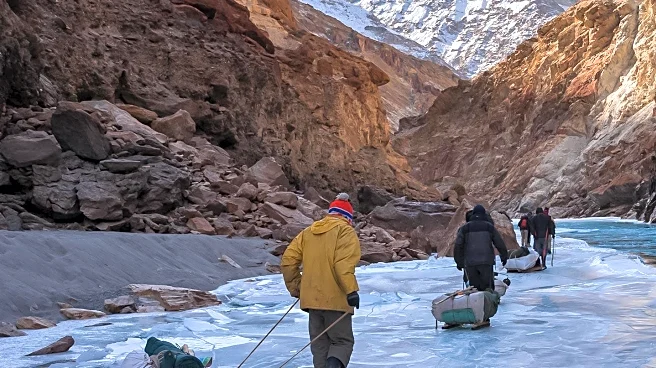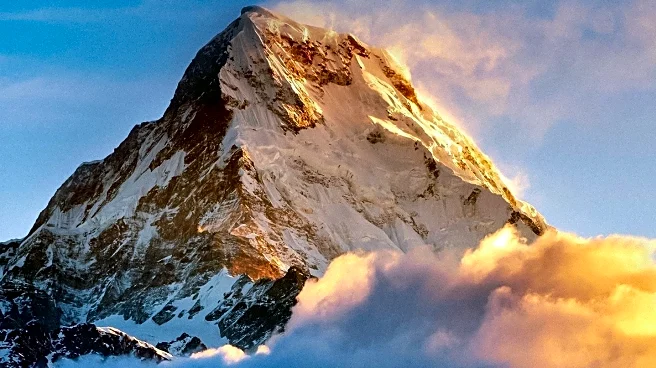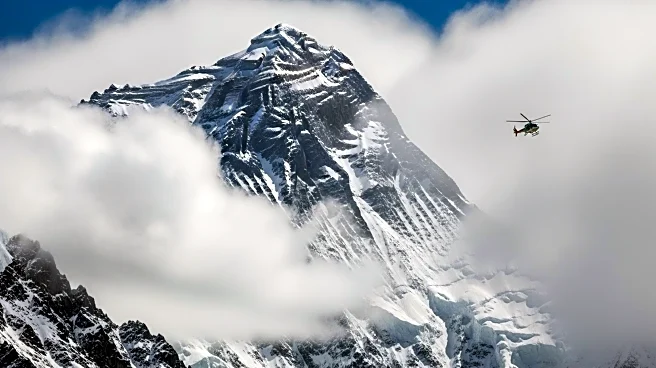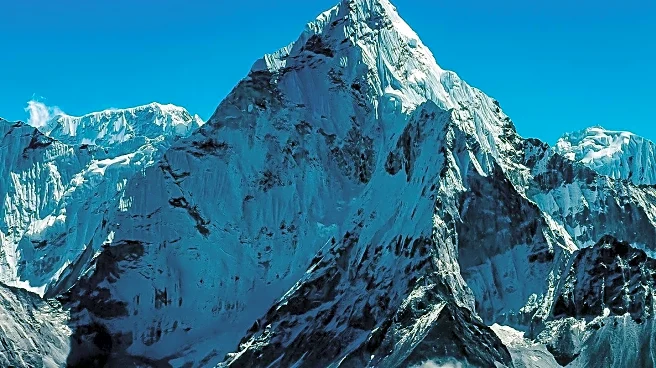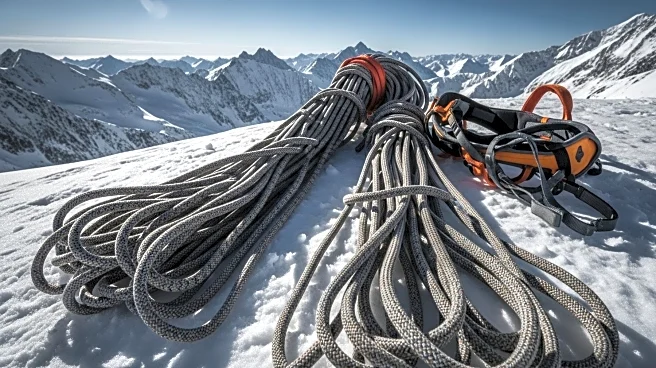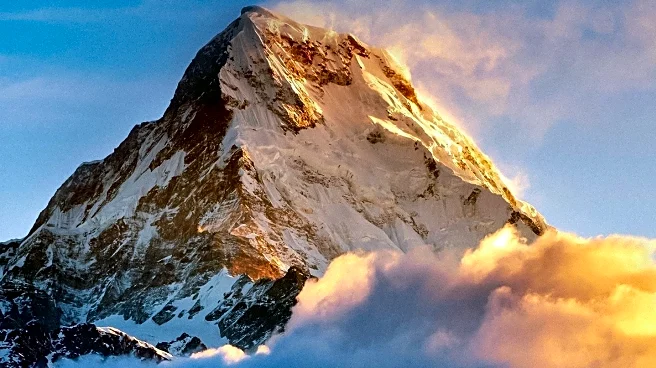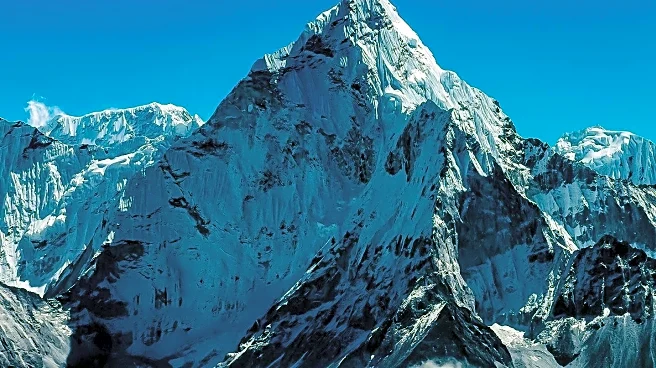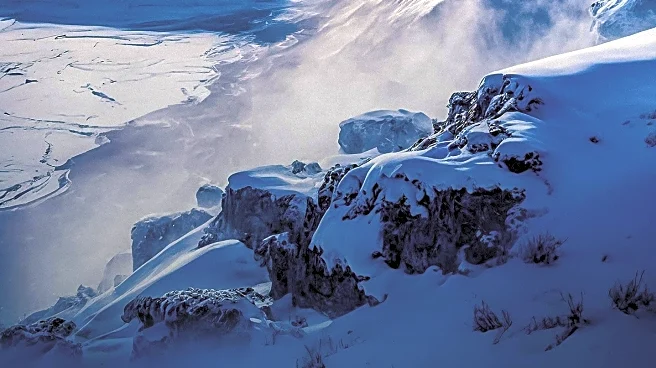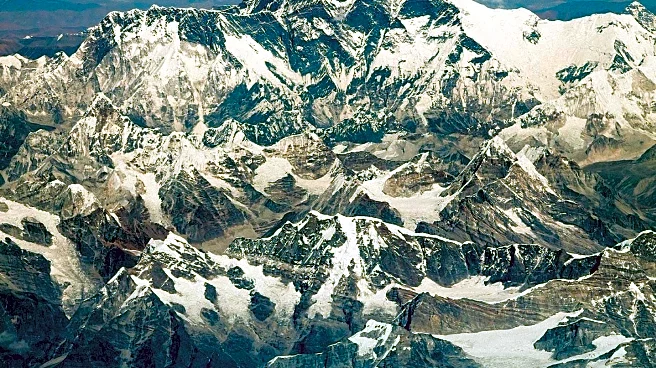What's Happening?
A severe snowstorm has trapped over 200 hikers near the eastern face of Mount Everest in Tibet. The storm, which began on October 3, 2025, has resulted in heavy snowfall and rain, complicating rescue efforts. According to Chinese state media, rescuers have managed to guide approximately 350 hikers to safety, transporting them to the township of Qudang. Unfortunately, a 41-year-old male hiker has died from hypothermia and acute altitude sickness. The storm coincided with China's National Day holiday, a peak visitation period for the mountain. The blizzard has blocked access to the area, and local villagers and rescue teams are working to clear the snow.
Why It's Important?
The incident highlights the risks associated with high-altitude trekking, especially during unexpected weather changes. The economic impact on the local tourism industry could be significant, as the region relies heavily on visitors during peak seasons. The tragedy underscores the need for improved safety measures and emergency response plans for trekkers. Additionally, the event may prompt a reevaluation of weather forecasting and communication systems in remote areas, potentially leading to policy changes to enhance safety for future expeditions.
What's Next?
Rescue operations are ongoing, with authorities focusing on evacuating the remaining trapped hikers. The incident may lead to increased scrutiny of trekking regulations and safety protocols in the region. There could be calls for better infrastructure and resources to handle such emergencies. The tourism industry might also see a temporary decline in visitors due to safety concerns, prompting local businesses to adapt their strategies.

